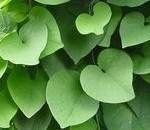 When planning a garden to attract butterflies it is important to consider both the adults and the larva. We all love to see butterflies landing on flowers to sip their nectar but how many gardeners provide for the larva that need food too? By planting a variety of vines, you can provide for both adults and larvae.
When planning a garden to attract butterflies it is important to consider both the adults and the larva. We all love to see butterflies landing on flowers to sip their nectar but how many gardeners provide for the larva that need food too? By planting a variety of vines, you can provide for both adults and larvae.
These five favorite perennial vines are attractive plants and will attract and sustain and number of different butterflies.
Wisteria (Wisteria spp.)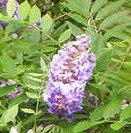 There are three species of wisteria that provide both nectar and food for larvae to butterflies: Japanese (Wisteria floribunda), Chinese (W. sinensis), and American (W. frutescens). Both Asian species can be invasive but they are hardier and produce larger flowers than the American species. Japanese wisteria has the longest flowers, longest bloom time, and comes in shades of white, pink, and bluish purple. Chinese wisteria has the most fragrant flowers in shades of blue-violet and white but is the most invasive.
There are three species of wisteria that provide both nectar and food for larvae to butterflies: Japanese (Wisteria floribunda), Chinese (W. sinensis), and American (W. frutescens). Both Asian species can be invasive but they are hardier and produce larger flowers than the American species. Japanese wisteria has the longest flowers, longest bloom time, and comes in shades of white, pink, and bluish purple. Chinese wisteria has the most fragrant flowers in shades of blue-violet and white but is the most invasive.
Size:
-
- 30’ (50’ for Chinese)
Light:
-
- Full sun
Soil:
-
- Average, moist, well-drained
Hardiness:
- Zones 6-8 for Asian species; 7-8 for American
Dutchman’s Pipe (Aristolochia durior)
 This aggressive climber with its inconspicuous mahogany and cream flowers attracts two kinds of swallowtail adults in spring when the flowers bloom. The adults lay their eggs on the dutchman’s pipe and the larva eat its leaves, taking in chemicals that are toxic to predators. Primarily grown for its foot-long, heart shaped leaves that provide a dense shade when grown on an arbor or trellis.
This aggressive climber with its inconspicuous mahogany and cream flowers attracts two kinds of swallowtail adults in spring when the flowers bloom. The adults lay their eggs on the dutchman’s pipe and the larva eat its leaves, taking in chemicals that are toxic to predators. Primarily grown for its foot-long, heart shaped leaves that provide a dense shade when grown on an arbor or trellis.
Size:
-
- 30’
Light:
-
- Sun to partial shade
Soil:
-
- Average, well-drained
Hardiness:
- Zones 4-8
Coral Honeysuckle (Lonicera sempervirens)
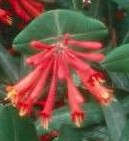 The red to yellow trumpet-shaped flowers of this woody vine are produced from spring to fall. The foliage is semi-evergreen. Coral honeysuckle should not be confused with Japanese honeysuckle (Lonicera japonica) which has white or peach colored flowers and is highly invasive.
The red to yellow trumpet-shaped flowers of this woody vine are produced from spring to fall. The foliage is semi-evergreen. Coral honeysuckle should not be confused with Japanese honeysuckle (Lonicera japonica) which has white or peach colored flowers and is highly invasive.
Height:
-
- 15-25’
Light:
-
- Sun to partial shade
Soil:
-
- Average, moist, well-drained but tolerates some drought
Hardiness:
- Zones 6-8
Passionflower (Passiflora incarnate)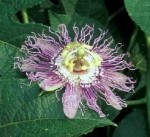 A fast growing native vine, passionflower dies to the ground in winter. Its flowers appear in mid- to late- summer and are followed by edible fruit, called maypop, that is attractive to many butterflies including zebra longwing and Gulf fritillary. It is the larval food for many butterflies including the crimson-patch longwing, the Julia, the Plebeian sphinx, and variegted fritillary.
A fast growing native vine, passionflower dies to the ground in winter. Its flowers appear in mid- to late- summer and are followed by edible fruit, called maypop, that is attractive to many butterflies including zebra longwing and Gulf fritillary. It is the larval food for many butterflies including the crimson-patch longwing, the Julia, the Plebeian sphinx, and variegted fritillary.
Size:
-
- 12-20’
Light:
-
- Full sun
Soil:
-
- Fertile, evenly moist
Hardiness:
- Zones 6-10
Sweet Autumn Clematis (Clematis paniculata maximonowicziana)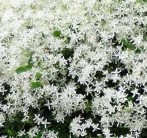 Masses of white fragrant flowers are produced in August and September. The flowers provide nectar for butterflies but although the foliage is attractive it does not serve as a host for any larvae.
Masses of white fragrant flowers are produced in August and September. The flowers provide nectar for butterflies but although the foliage is attractive it does not serve as a host for any larvae.
Size:
-
- 30’
Light:
-
- Full sun to partial shade
Soil:
-
- Fertile, moist, well-drained
Hardiness:
- Zones 4-9
 To attract the most butterflies it is important to provide nectar flowers from spring to fall. In spring, Dutchmans’ pipe and wisteria will begin the bloom-season followed by coral honeysuckle that will continue throughout the summer until frost. Passionflower and sweet autumn clematis will provide flowers from mid-summer onward just as the peak season for butterflies arrives. All the vines except the clematis will provide food for larvae as well as nectar for adults.
To attract the most butterflies it is important to provide nectar flowers from spring to fall. In spring, Dutchmans’ pipe and wisteria will begin the bloom-season followed by coral honeysuckle that will continue throughout the summer until frost. Passionflower and sweet autumn clematis will provide flowers from mid-summer onward just as the peak season for butterflies arrives. All the vines except the clematis will provide food for larvae as well as nectar for adults.